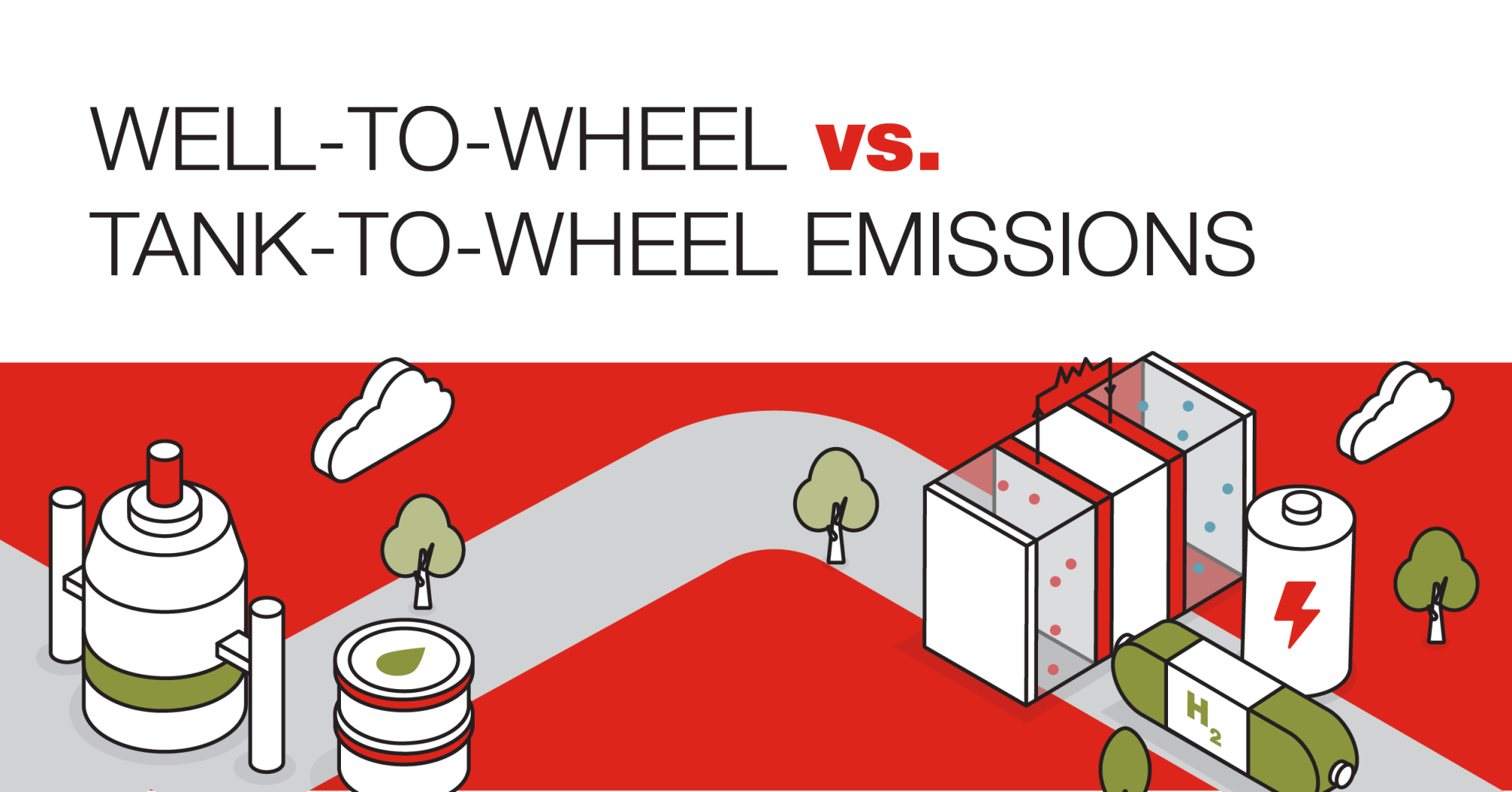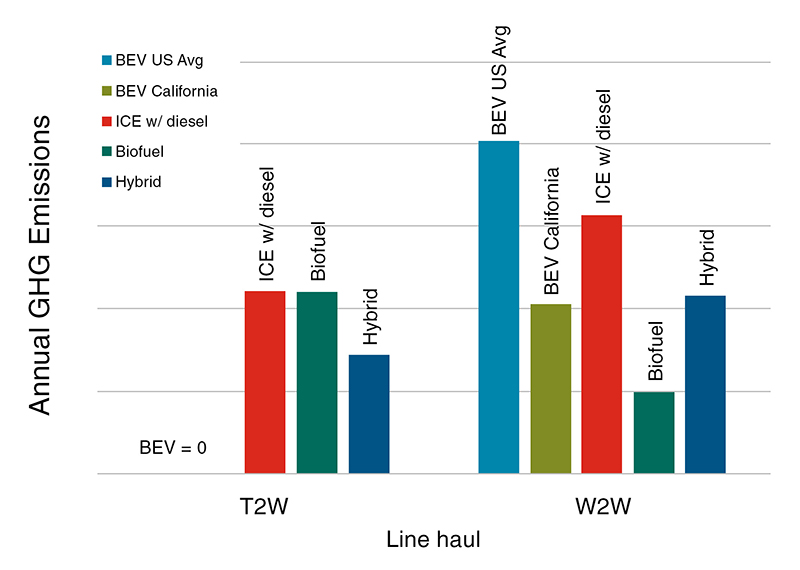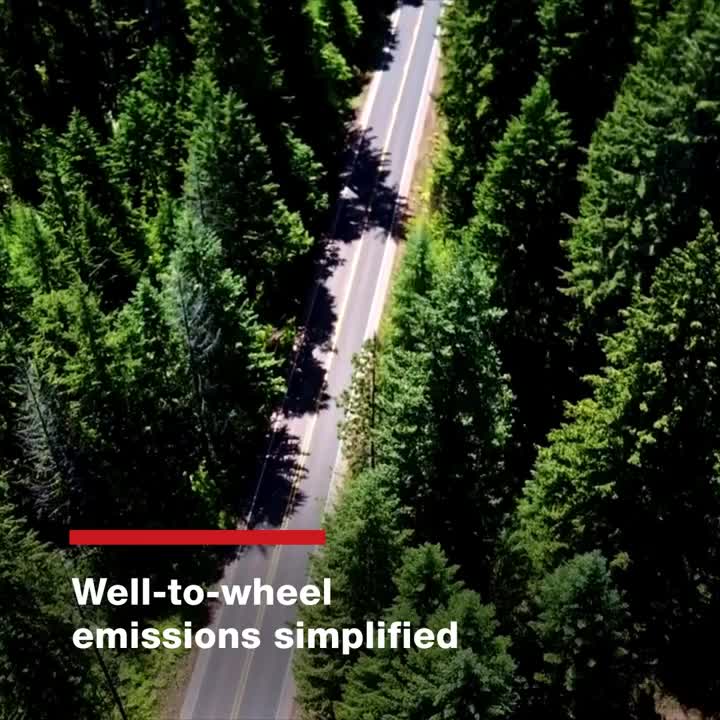Well to Wheel Emissions Simplified
What are "well to wheel" emissions? We answer your questions about a topic that's on everyone's radar as the world continues its march to a zero emissions future.
By Catherine Morgenstern, Brand Journalist

The first phases of greenhouse gas regulations for commercial vehicles focused on tailpipe emissions, and this perspective brought the industry many efficiency improvements. With the advent of low to zero carbon fuels and new power sources, differences in GHG emissions are becoming more difficult to assess. One example is battery electric powertrains which get their energy from charging via the electric grid.

What is well to wheel efficiency and emissions?
"Well to wheel" is a method to evaluate efficiency and emissions of an energy source by considering its entire life cycle. This method provides the most complete and accurate way to measure energy consumption and greenhouse gas emissions.
Well to wheel analysis is a comprehensive method for assessing energy efficiency and emissions. It takes into account the total energy consumption and greenhouse gas emissions throughout the entire life cycle of an energy source.
Well-to-wheel vs tank-to-wheel emissions
Well to wheel emissions assess the greenhouse gas emissions generated throughout a fuel's entire lifecycle. The term 'tank-to-wheel' is a subset of well to wheel, focusing solely on a power source's emissions during operation. These are the tailpipe emissions that were once the cornerstone of regulation and assessment but can no longer tell the whole emissions story.
For example, the bar chart shows tank to wheel and well to wheel annual GHG for the line-Haul truck application. From a tank to wheel perspective, the BEV powertrain has zero emissions, and would be considered better than most ICE options fueled by diesel. Running on a renewable biofuel shows no benefits with this measure. The lower bar of the hybrid configuration shows that efficiency improvements provide GHG emissions reductions, as well.
The comparison between the powertrain options looks different when compared on a well to wheel basis. Here, the important factor is that there are GHG emissions associated with producing, transporting and distributing, and using each of these fuels.
First, notice that the ICE bar is taller. This increased height accounts for petroleum extraction, transportation, refining and distribution. With these additional considerations, the BEV bars are now non-zero. For example, if ‘average electricity’ from across the US were used to power the truck, the GHG emissions from ICE with diesel is actually lower than BEV. If greener electricity from California were used, BEV shows reduced GHG emissions over a fossil fueled diesel engine but are still non-zero.
The benefits of running on a renewable fuel (Biofuel) are much clearer when considered on a well to wheel basis. In our example, biofuels provide the highest reduction in GHG emissions, but the height of the hybrid diesel bar is similar to that of BEV in California. This indicates that higher performance ICE-based powertrains can provide substantial GHG benefits.

Technologies to lower well-to-wheel emissions
When it comes to lowering GHG, it’s not a matter of which technology is better — but rather which is more suitable to a specific set of conditions and needs. We have to consider range, weight, downtime, performance requirements, customer economics, and related infrastructure to provide the best options for the market. This is why a company like Cummins is working to develop and improve multiple technologies for myriad applications.
Advanced diesel engines provide significantly improved fuel economy and feature after-treatment systems, resulting in a reduction of GHG. You can find advanced-diesel engines in many applications ranging from line-haul and regional-haul trucking to construction and agriculture applications.
Fuel-agnostic engine platforms give customers the option to choose the right fuel to get the job done. This choice may results in minimal to no GHG emissions output for a specific situation.

Low- and zero-carbon fuels can be used as an alternative to traditional fossil fuels in many applications. These fuels show a marked reduction in GHG in many different sections of the well to wheel lifecycle. Renewable diesel, for example, merely returns carbon to the atmosphere—the same carbon atoms that the source plants used from the atmosphere. Some of these fuels, such as renewable natural gas (RNG), can even deliver sub-zero emissions.
New power technologies such as battery, fuel cell, and hydrogen produce no carbon dioxide while in use. Well to wheel emissions help to show us the full picture of their best and most useful applications.
Beyond ‘well to wheel’: other lifecycle considerations
Well to wheel emissions analysis gave manufacturers and regulators a more holistic view of the fuel lifecycle, but new technologies have brought further considerations even outside this purview.
Raw material extraction and battery production can result in significantly more GHG emissions than the production and use of internal combustion engines. Batteries that power electric vehicles will, eventually, reach the end of their life, and both recycling and “second life” options are being explored and refined.
As technology becomes more and more advanced, these “cradle to grave” considerations may replace well to wheel as the driving force toward a zero emissions future.
Author Profiles

Catherine Morgenstern, Brand Journalist
Catherine Morgenstern is a Brand Journalist for Cummins, covering topics such as alternative propulsion, digitalization, manufacturing innovation, autonomy, sustainability, and workplace trends. She has more than 20 years of experience in corporate communications, holding leadership positions most recently within the Industrial Capital Goods sector. Catherine began her career as a marketing writer for a biotechnology company, where she learned to take complicated and highly technical information and make it accessible to everyone. She believes the concept of “storytelling” is more than a trendy buzzword and loves to find ways for her readers to make personal connections to her subjects. Catherine has a passion for technology and innovation and how its intersection can make an impact in all our lives. Catherine recently moved back to her hometown in the Hudson Valley, New York after a several decades in Los Angeles and Chicago. She is a graduate of UCLA and enjoys gardening and spending time with her husband and three children.
Related Topics
Related Tags